class: title-slide, center, middle # Computational Archaeology ## 14C Calibration II ### Martin Hinz #### Institut für Archäologische Wissenschaften, Universität Bern 04/12/19 --- ## OxCal ### Project .pull-left[ - File > New - Insert R_Date - Name - 14C Date - Uncertainity ### Dates - Grab 29 (UtC 13189) 3671 ± 33 BP - Grab 20 (UtC-13187) 3600 ± 38 BP - Grab 31 (UtC-13190) 3560 ± 36 BP - Grab 42 (UtC-13192) 3559 ± 41 BP - Grab 18 (UtC-13186) 3531 ± 40 BP - Grab 32 (UtC-13191) 3521 ± 37 BP - Grab 27 (UtC-13188) 3409 ± 38 BP File > Run ] .pull-right[ 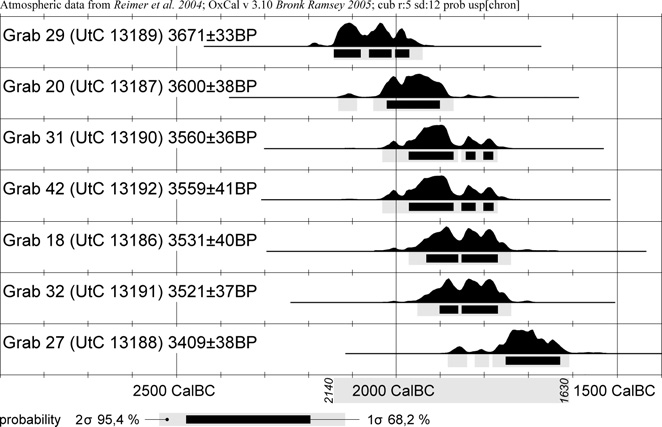 ] --- ## OxCal ### Results .pull-left[ - Table - Single Plot - Multi-Plot (not very useful yet) - Curve plot - Raw Data ] .pull-right[ 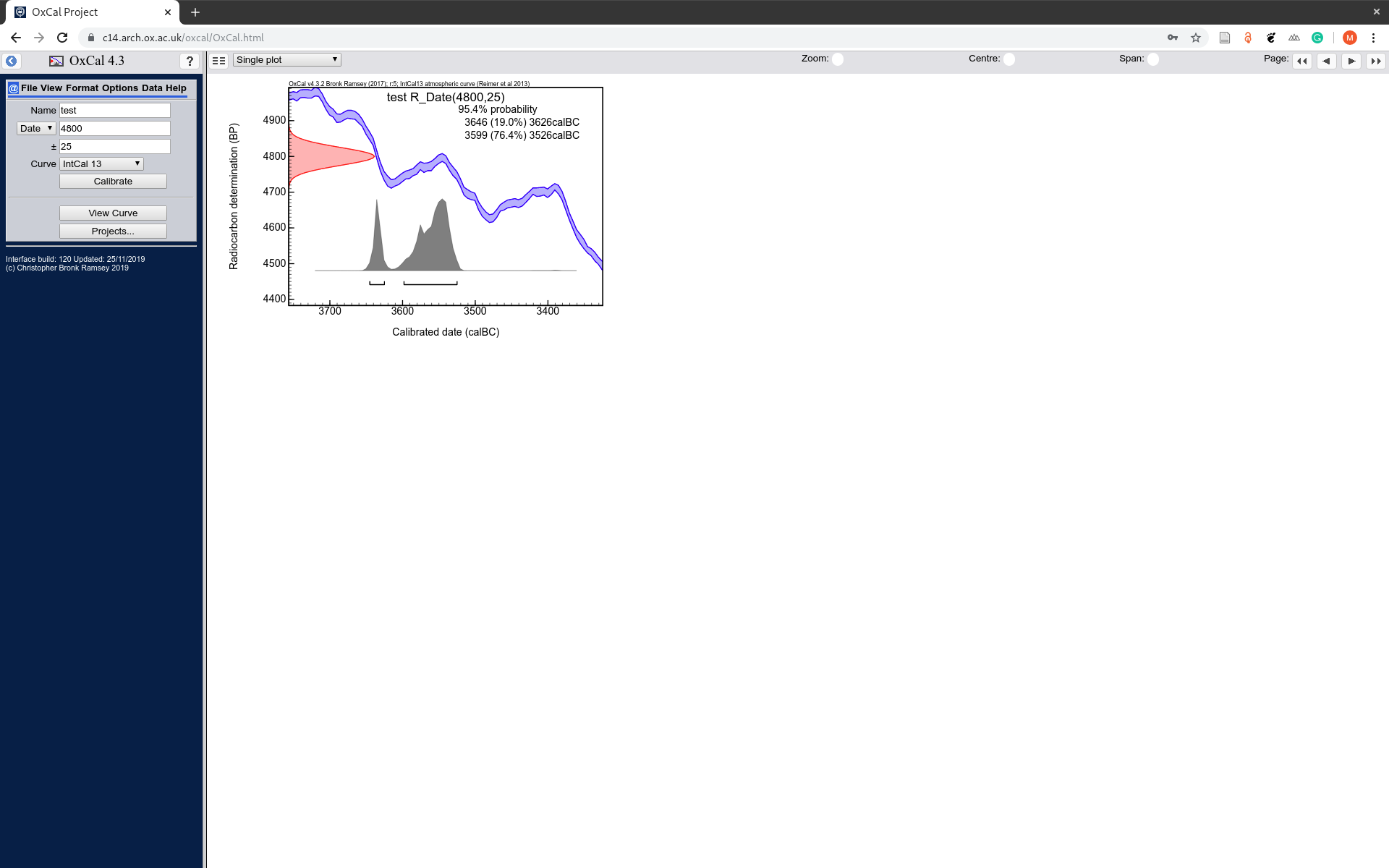 ] --- ## OxCal ### Combine .pull-left[ If a single process can be more accurately dated by several dates: - e.g. the dating of a single grave can be estimated more precisely, if more than one date of the buried person (equal to - body!) is present - Same event - multiple dates for it - Works without Bayes: Assumption: The dates of dating all should be equal (Bayes gets even better...) **Attention**: Never combine if you are not sure that there are the event is actually one and the same (Simultaneity!) ] .pull-right[ ```r Combine("C") { R_Date("A",2000,20); R_Date("B",2020,30); }; ``` ] --- ## OxCal ### Duration of the Burial Ground .pull-left[ - Phase - Sequence - Boundaries ] .pull-right[ ```r Sequence() { Boundary("S"); Phase() { R_Date("A",3050,25); R_Date("B",3010,25); R_Date("C",3020,25); R_Date("D",3000,25); }; Boundary("E"); }; ``` ] --- ## OxCal ### Duration of the Burial Ground, adding Queries .pull-left[ - First(); - Last(); - Span(); ] .pull-right[ ```r Sequence() { Boundary("S"); Phase() { R_Date("A",3050,25); R_Date("B",3010,25); R_Date("C",3020,25); R_Date("D",3000,25); First(); Last(); Span(); }; Boundary("E"); }; ``` ] --- ## OxCal ### Types of Boundaries .pull-left[ - Boundary([Name], [Expression]); - Sigma_Boundary([Name], [Expression]); - Tau_Boundary([Name], [Expression]); - Zero_Boundary([Name], [Expression]); Also interesting: Trapezoidal boundaries for gradual transition (eg. cultural phases) ```r Boundary("MidStart") { Transition("Duration Start"); Start("Start Start"); End("End Start"); }; ``` ] .pull-right[ 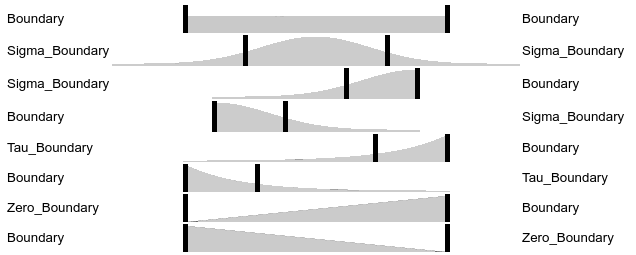  ] --- ## OxCal ### Adding Stratigraphical Informations .pull-left[ - what is sequential: Sequence - what can not be sequenced: Phase ] .pull-right[ 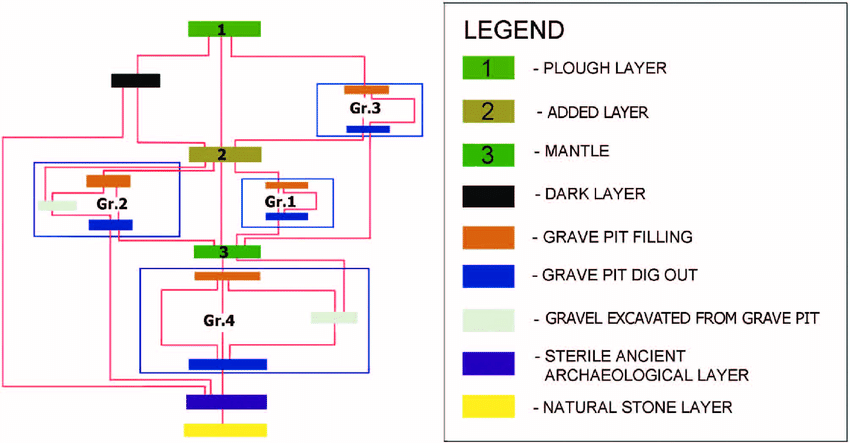 ] --- ## OxCal ### Adding Stratigraphical Informations You can make this arbitrary complicated! .pull-left[  ] .pull-right[ 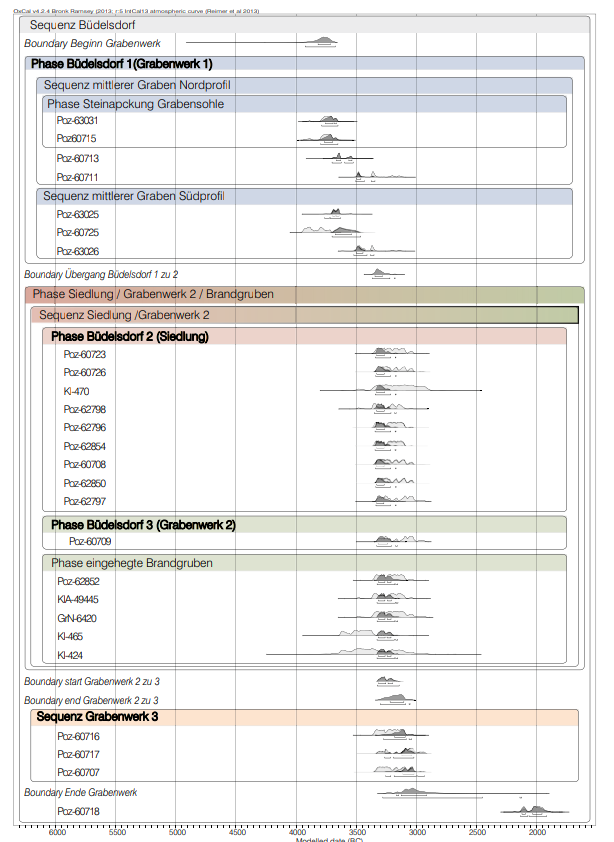 ] --- ## OxCal ### Adding Stratigraphical Informations .pull-left[ - what is sequential: Sequence - what can not be sequenced: Phase ### 14C dates - Grab 29 (UtC 13189) 3671 ± 33 BP - Grab 20 (UtC-13187) 3600 ± 38 BP - Grab 31 (UtC-13190) 3560 ± 36 BP - Grab 42 (UtC-13192) 3559 ± 41 BP - Grab 18 (UtC-13186) 3531 ± 40 BP - Grab 32 (UtC-13191) 3521 ± 37 BP - Grab 27 (UtC-13188) 3409 ± 38 BP ] .pull-right[ 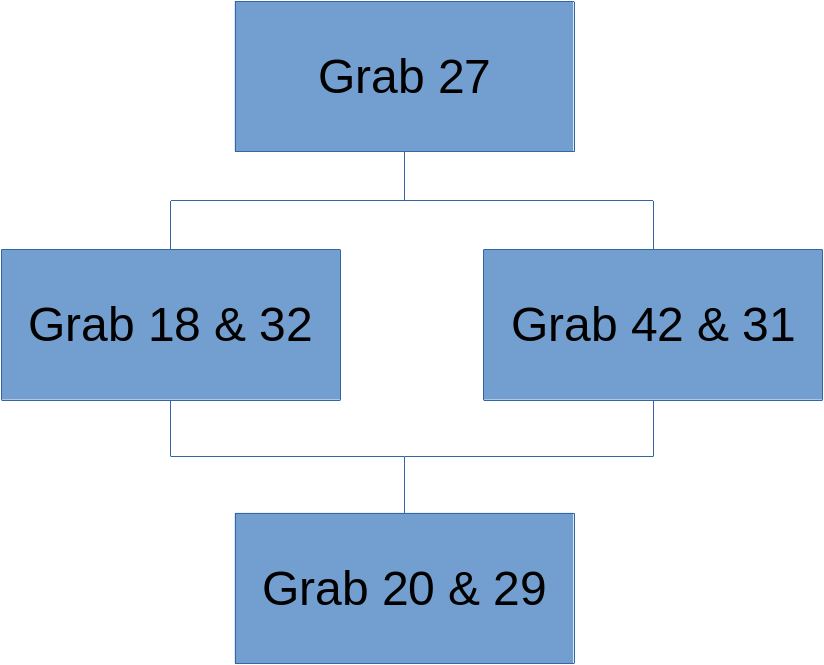 ] --- ## OxCal ### Further possible topics - wiggle matching (gap) - sum calibration (sum) - outlier analysis (Outlier & Outlier_Model) - Deposition models (D_Sequence, V_Sequence, P_Sequence, U_Sequence, ) more at the [OxCal help page](https://c14.arch.ox.ac.uk/oxcalhelp/hlp_contents.html) --- class: inverse, middle, center # Any questions? .footnote[ .right[ .tiny[ You might find the course material (including the presentations) at https://github.com/MartinHinz/ca_hs_2019 You can see the rendered presentations at http://martinhinz.github.io/ca_hs_2019 You can contact me at <a href="mailto:martin.hinz@iaw.unibe.ch">martin.hinz@iaw.unibe.ch</a> ] ] ]